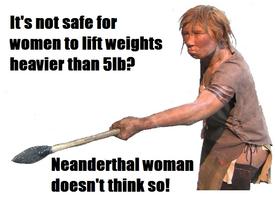TDEE -30% vs Eating back Calories?
Options

cebiginalaska
Posts: 280 Member
Hello everybody. I was thinking about switching to TDEE -30ish %
Right now my total intake calories has varied from 1800 to 3000 calories depending on how much exercising that I do in a day.
My average is around 2400 total Calories.
I live a sedentary lifestyle but within the past 2 weeks I have been trying to exercise 6 times a week because of the Les Mill's Pump 90 day workout schedule. 3 days are workout days with weights and the other 3 days are days where I do Yoga or a cardio workout.
My calorie burn based on my HRM is usually around 1000 calories.
My body fat is 48.1% based on the military calculator.
Harris-Benedict BMR is 2659
Katch-McArdle BMR is 1951
TDEE -30% (already subtracted)
Sedentary = 2234 calories
Lightly Active = 2559 calories
Moderatly Active = 2885 calories
If I were to switch to TDEE would a 2500 calorie goal be okay?
Should I eat that much calories even on my rest days? Thanks :bigsmile:
Right now my total intake calories has varied from 1800 to 3000 calories depending on how much exercising that I do in a day.
My average is around 2400 total Calories.
I live a sedentary lifestyle but within the past 2 weeks I have been trying to exercise 6 times a week because of the Les Mill's Pump 90 day workout schedule. 3 days are workout days with weights and the other 3 days are days where I do Yoga or a cardio workout.
My calorie burn based on my HRM is usually around 1000 calories.
My body fat is 48.1% based on the military calculator.
Harris-Benedict BMR is 2659
Katch-McArdle BMR is 1951
TDEE -30% (already subtracted)
Sedentary = 2234 calories
Lightly Active = 2559 calories
Moderatly Active = 2885 calories
If I were to switch to TDEE would a 2500 calorie goal be okay?
Should I eat that much calories even on my rest days? Thanks :bigsmile:
0
Replies
-
a couple of things.... some methods of estimating body fat are not so accurate when you have more to lose, so the military body fat formula may be overestimating your body fat percentage.... but still use it for monitoring progress, because you'll see the numbers dropping and that will encourage you to keep going. that's what happened with me. When I was obese, the navy formula put my body fat percentage at 44%, calipers put it at 28%, the first was an overestimate the second an underestimate (at high body fat levels calipers are not accurate, as the formulas they're based on were developed on relatively lean people) - it's not easy to get an absolute value for body fat percentage, but definitely use the circumference ones to monitor your progress.
I think the Harris-Benedict formula would be more accurate for you, because I recently learned that Katch-McArdle doesn't take into account variations in body fat percentage, as it's based on lean mass. So for very athletic people who have a high lean body mass for their height, Katch-McArdle is better. for people who have a high body fat percentage, Harris-Benedict is better. Also, if the military body fat formula is over-estimating your body fat percentage, this will make Katch-McArdle even less accurate. So I'd recommend going with the BMR and TDEE numbers calculated with Harris Benedict.
personally, I find the TDEE - x% to be more reliable and easier than eating back exercise calories, because it's very difficult to estimate how much you're actually burning during exercise, and overestimating calorie burn leads to eating too many back and stalling your progress. However with TDEE - x%, you have one number of calories that you stick to, and can easily adjust according to your results, i.e. if you're not losing, subtract 200 and see if that helps OR be more active at the same number of calories (the usual culprit for not losing would be overestimating your activity factor), and if you're suffering from symptoms caused by undereating, e.g. extreme hunger, the desire to binge, mood swings, lack of energy etc, you can increase your calories by 100 or so, and see if that fixes it (and another 100 on top if it doesn't, etc).
The only caution is if you switch to this method after undereating, people often get water weight gains which tend to make people freak out and think they've damaged their metabolism. It's a good idea to let the body settle down first, before monitoring whether you're losing or not on your TDEE -x% number of calories. However it doesn't sound like you've been undereating so this may not apply.0 -
Thanks for your input. I got the TDEE info from the Road Map 2.0 guide. I think that I will try set my calorie goal at 2200 and see how it goes.0
This discussion has been closed.
Categories
- All Categories
- 1.4M Health, Wellness and Goals
- 396.6K Introduce Yourself
- 44.2K Getting Started
- 260.8K Health and Weight Loss
- 176.3K Food and Nutrition
- 47.6K Recipes
- 232.8K Fitness and Exercise
- 449 Sleep, Mindfulness and Overall Wellness
- 6.5K Goal: Maintaining Weight
- 8.7K Goal: Gaining Weight and Body Building
- 153.3K Motivation and Support
- 8.3K Challenges
- 1.3K Debate Club
- 96.5K Chit-Chat
- 2.6K Fun and Games
- 4.5K MyFitnessPal Information
- 16 News and Announcements
- 18 MyFitnessPal Academy
- 1.4K Feature Suggestions and Ideas
- 3K MyFitnessPal Tech Support Questions
